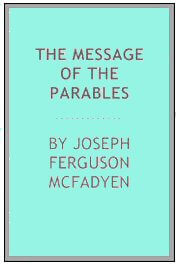Wilbur Pickering’s New Testamentr [WPNT]
MySword
From the Webmaster
10/28/2024 If you come across a post that doesn't have a download link, please post a note to me in the comments of that post (no download), and I will try to get the file uploaded and linked to that post. We have had glitches in the past, and some posts lost their downloads. Basically, I am taking down all posts (650 posts on the site), and checking each one to see if they have their download, and if not adding it. Most do not. Once I take it down, it will repost (1 per day) until I am caught up and can work on new posts. Note that MySword reads theWord modules and esword modules now, so use them if you have them. Check these sites twmodules.com and eswordlibrary.com
If you can use these mysword modules in your Christian life and ministry, I need a big favor from you. I need you to pray for me. I sustain this website alone, out of my own living expense money. The Google Adsense ads have been adding to my income at the rate of 5 US cents per day for Google Adsense Ads on 32 of my sites, all of them combined earn me a nickel per day except on bad days when it is less. I have been hacked continually, and these sites breakdown or are hacked, so I need your prayers. Please pray that God would protect this labor of love
-- David Cox, Webmaster
Wycliffe’s Bible 1382
Wycliffe’s Bible (1382) [Wycliffe]
Summary of Wycliffe’s Bible 1382
Wycliffe’s Bible is the name now given to a group of Bible translations into Middle English that were made under the direction of, or at the instigation of, John Wycliffe. They appeared over a period from approximately 1382 to 1395. These Bible translations were the chief inspiration and chief cause of the Lollard movement, a pre-Reformation movement that rejected many of the distinctive teachings of the Roman Catholic Church. In the early Middle Ages, most Western Christian people encountered the Bible only in the form of oral versions of scriptures, verses and homilies in Latin (other sources were mystery plays, usually conducted in the vernacular, and popular iconography). Though relatively few people could read at this time, Wycliffe’s idea was to translate the Bible into the vernacular, saying “it helpeth Christian men to study the Gospel in that tongue in which they know best Christ’s sentence”.
Long thought to be the work of Wycliffe himself, it is now generally believed that the Wycliffite translations were the work of several hands. Nicholas of Hereford is known to have translated a part of the text; John Purvey and perhaps John Trevisa are names that have been mentioned as possible authors. The translators worked from the Vulgate, the Latin Bible that was the standard Biblical text of Western Christianity, and the text conforms fully with Catholic teaching. They included in the testaments those works which would later be called deuterocanonical by most Protestants, along with 3 Esdras which is now called 2 Esdras and Paul’s epistle to the Laodiceans.
Although unauthorized, the work was popular. Wycliffite Bible texts are the most common manuscript literature in Middle English. Over 250 manuscripts of the Wycliffite Bible survive.
The association between Wycliffe’s Bible and Lollardy caused the kingdom of England and the established Catholic Church in England to undertake a drastic campaign to suppress it. In the early years of the 15th century, Henry IV (De haeretico comburendo), Archbishop Thomas Arundel, and Henry Knighton published criticism and enacted some of the severest religious censorship laws in Europe at that time. Even twenty years after Wycliffe’s death, at the Oxford Convocation of 1408, it was solemnly voted that no new translation of the Bible should be made without prior approval. However, as the text translated in the various versions of the Wycliffe Bible was the Latin Vulgate, and as it contained no heterodox readings, there was in practice no way by which the ecclesiastical authorities could distinguish the banned version; and consequently many Catholic commentators of the 15th and 16th centuries (such as Thomas More) took these manuscript English bibles to represent an anonymous earlier orthodox translation. Consequently, manuscripts of the Wycliffe Bible, which when inscribed with a date always purport to precede 1409, the date of the ban, circulated freely and were widely used by clergy and laity. (wikipedia.org)
More Modules from English Bibles Category
- Young’s Literal Translation YLT
- Wycliffe’s Bible 1382
- Wilbur Pickering’s New Testament WPNT
- Wesley’s New Testament 1755 [Wesley]
- Webster Bible Translation [Webster]
- Voice in the Wilderness Bible [VW]
- Updated King James Version [UKJV]
- Tyndale Bible of 1534 [Tyndale]
- The Timeless King James Update (TKJU) New Testament
- The Open English Bible [OEBus]
Young’s Literal Translation YLT
Young’s Literal Translation [YLT]
Summary of Young’s Literal Translation YLT
Young’s Literal Translation is a translation of the Bible into English, published in 1862. The translation was made by Robert Young, compiler of Young’s Analytical Concordance to the Bible and Concise Critical Comments on the New Testament. Young used the Textus Receptus (TR) and Majority Text (MT) as the basis for his translation. Young produced a “Revised Version” of the translation in 1887, which was based on the Westcott-Hort text that was completed in 1885. After Robert Young died on October 14, 1888, the publisher released a new Revised Edition in 1898.
More Modules from the English Bibles Category
- Young’s Literal Translation YLT
- Wycliffe’s Bible 1382
- Wilbur Pickering’s New Testament WPNT
- Wesley’s New Testament 1755 [Wesley]
- Webster Bible Translation [Webster]
- Voice in the Wilderness Bible [VW]
- Updated King James Version [UKJV]
- Tyndale Bible of 1534 [Tyndale]
- The Timeless King James Update (TKJU) New Testament
- The Open English Bible [OEBus]
McFadyen The Message of the Parables
THE MESSAGE OF THE PARABLES
by Joseph Ferguson McFadyen, M.A. D.D.

This is another standard work on the NT parables. Note that this work is seen from a “teacher’s view point” with the first three chapters on Jesus’ use of parables as a teaching method, and another chapter on the parable as an allegory, another on interpretation of parables. Continue reading
Bonner The Christian Hell
The Christian Hell
from the First to the Twentieth Century
by Bonner, Hypatia Bradlaugh (1858-1935)
I am including this work from Mrs. Bonner (a feminist and atheist), because she outlines the secular history of the concept of hell. Obviously she will not give us a fair shake on the Bible’s presentation of the subject, but she will educate us on secular man’s view of hell. She has added probably 30 woodcuts from ancient times depicting what they imagined hell would be like.
